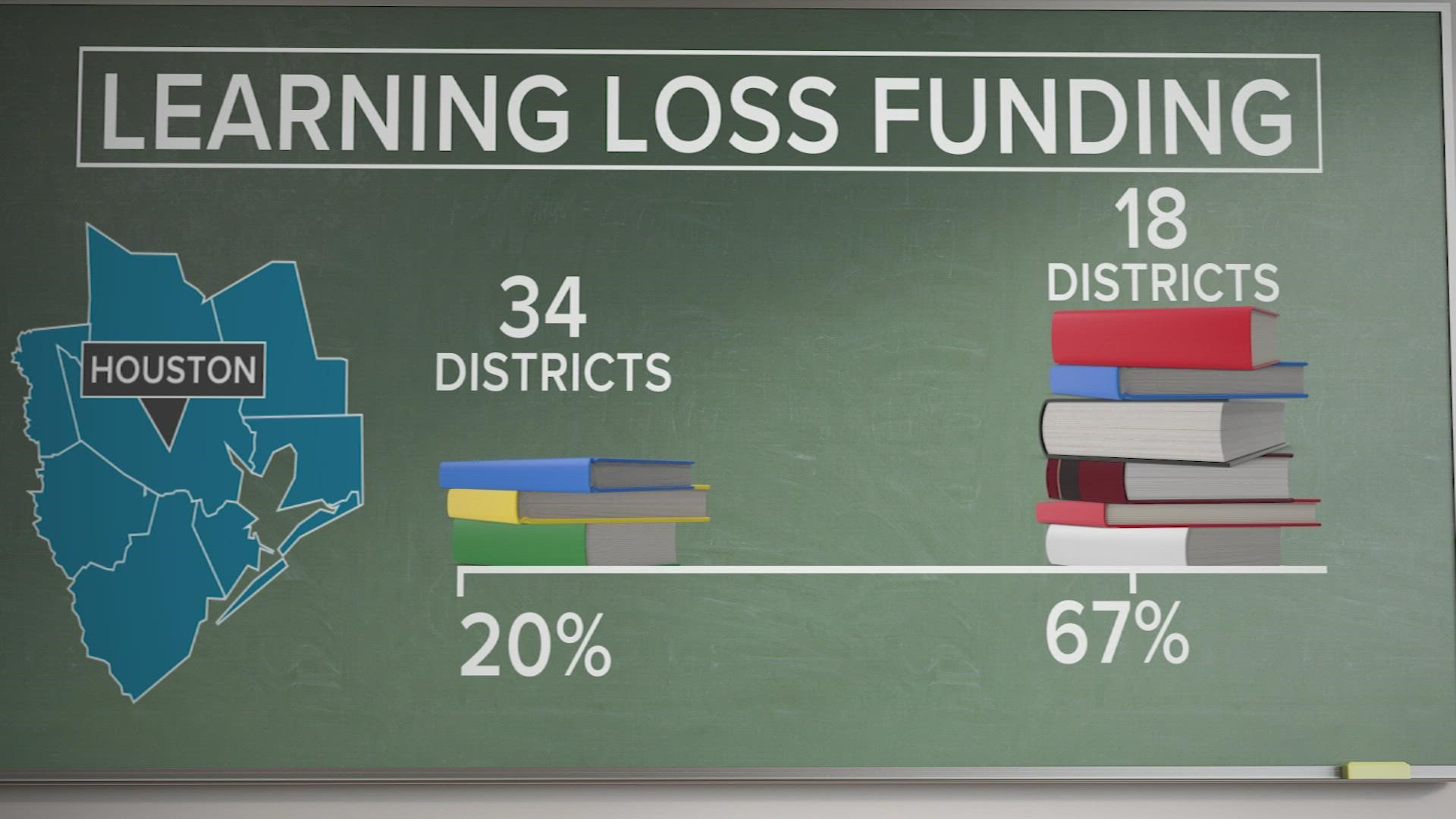HOUSTON — Learning loss has accelerated dramatically during the COVID-19 pandemic, but schools and districts across Houston vary widely as to how much they’re spending towards catching students up who have fallen behind.
“We’re seeing a level of loss that we’ve never really seen before in public education,” Duncan Klussmann said.
Klussmann is a UH clinical assistant professor in educational leadership and policy studies and a former superintendent.
“This is the greatest challenge we’ve had in public education for the last 100 years,” Klussmann said.
A KHOU 11 News analysis of grant applications for the latest round of Emergency and Secondary School Emergency Relief, or ESSER III funds, reveals more than $1.8 billion has been allocated to 94 “local education agencies,” which are charter schools and school districts in the greater Houston area.
INTERACTIVE MAP: Select a charter school or school district name to find how much federal grant money it’s set aside for learning loss and a link to their use of fund plans submitted to the Texas Education Agency.
Under the federal rules, those educational entities must set aside at least 20% to programs that address learning loss. Those may include high-dosage tutoring, hiring specialized interventionists and expanding summer school opportunities. The remaining money may be spent on everything from HEPA filters and other pandemic-related safety improvements to capital expenditures.
Klussmann said given what’s at stake, the federal minimum seems low.
“I’m not so sure 20% cuts it, and I’m not so sure we have any analysis that says that’s the right percentage,” he said.
Turns out, 34 districts and charter schools in the Houston area are only dedicating the 20% minimum, according to their applications. On the flip side, 18 have promised to use 66% or more for learning loss mitigation.
RELATED: 'Trying to get children back to school' | Districts go door-to-door in efforts to boost enrollment
That includes Goose Creek ISD, which is all in. The Baytown district is spending 100% of ESSER III funding toward catching kids up.
“Our priority as always is to put students first,” Sterling High School Principal Nathan Chaddick said.
A large chunk of the federal grant money is paying retired teachers to come back to school for intensive one-on-one and small group tutoring sessions.
Beth Woods had taught for 28 years at Goose Creek, before coming out of retirement.
“We’ve always had kids who struggle and are behind; there just seems to be so many more,” Woods said. “They’re clearly behind, absolutely behind. They have gaps in their understanding.”
“And we’re just here hoping to close that gap,” retired teacher Sandra Whitley said. “Once students start having holes in their studies it makes bigger holes and working through these challenges can only help make them more successful.”
None of the major districts that listed 20% for learning loss on their grant applications agreed to an interview, except for Humble ISD.
“It's appropriate if you're using other dollars to support your students and make sure that they are being successful,” Humble Superintendent Dr. Elizabeth Fagen said.
Fagen said the district decided to dedicate more state funding toward learning loss, which are recurring dollars, not short-term “one-and-done” money.
“The federal dollars will ultimately run out,” Fagen said.
As part of its annual budget going forward, Humble ISD hired 50 teachers to double staff in some at-risk elementary classrooms identified by data and metrics. Students who have fallen behind the most now have two teachers instead of one.
“We bring those (teacher to student) ratios from 1 to 20, which is a more difficult scenario to personalize learning, to a ratio of 1 to 10,” Fagen said.
Editor's note: An earlier version of this story had the figure at $1.8 million. It's been updated to reflect the accurate amount of $1.8 million.

